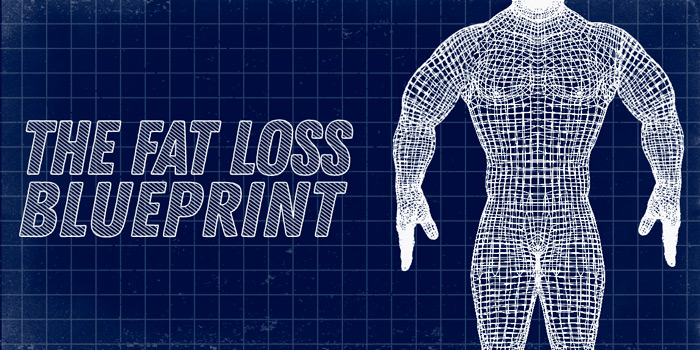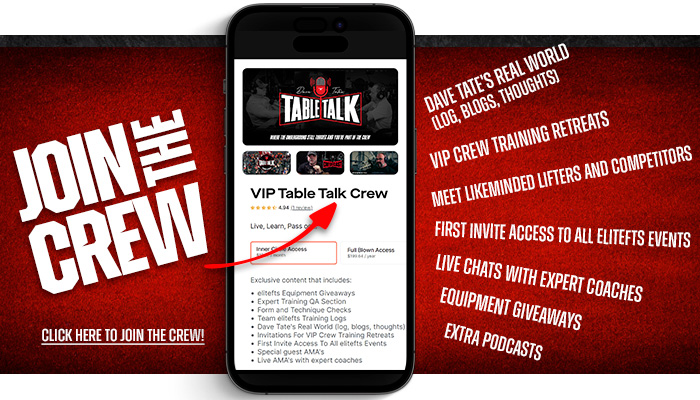
Unless you’re an athlete where it’s advantageous for you to have more body mass, chances are you want to be a bit leaner. How lean you get depends heavily on your diet, along with some other key factors.
Today I want to give you the exact blueprint I use with my clients to help you get lean AF by the time summer comes around.
Whether you’re a bit more advanced or someone who’s a newbie to the game, the blueprint I’m going to share in this article can help you get to the next level.
These tactics have worked for a wide variety of my clientele over the last fifteen years, including high-level athletes, CEOs, police officers, firefighters, fitness enthusiasts, and dudes who were deconditioned and overweight. I’m confident that if you stay consistent and stick to these principles, they will work for you too.
RELATED: Can You Gain Muscle and Lose Fat at the Same Time?
So let’s get into it.
Step 1: Assess
If you’re going to melt fat and transform your physique this year, then it’s crucial you don’t overlook this critical first step.
It would be best if you were brutally honest with yourself to be successful in anything. If you don’t take some time to assess yourself and your habits, it will be impossible to determine where you need to focus your energy. So here’s what you’re going to do.
For the next seven days, track the following:
- What time did you get to bed and wake up?
- How do you feel on a scale of 1-5 when you wake up (1 meaning shit and 5 meaning incredible)?
- Write out everything you eat and drink, including any additives you may put in your beverages or on your food.
- Approximately how many steps did you take today? Easily track steps on your smartphone.
- Did you get in some resistance training? If so, for how long?
- What is your stress level on a scale of 1-5 today (1 meaning chill AF and 5 meaning stressed out of your mind)?
You can continue with this assessment weekly or even daily if you’d like, but let’s start with the next seven days to begin this process.
Step 2: Adjust Sleep and Stress Management Skills
Sleep and stress management are the two most overlooked components of fat loss, performance, and health, in my opinion.
Everyone is talking about the latest and greatest trendy diet or training methods. Still, if you skip over quality sleep and stress management, then you’re disregarding the foundation of your health and performance.
That’s not to say that you CAN’T lose fat without quality sleep and gaining hold of your stress level, but is that optimal? It’s probably safe to say that you want to be lean and healthy.
Your sleep is the foundation for both.
Experts say that about seven to nine hours of quality sleep is optimal. Remember that when you sleep, you’re eliciting hormones like testosterone, human growth hormone, and melatonin, repairing damaged tissue and cells from training and life, regulating blood glucose, enhancing cardiovascular health and improving blood pressure, combatting diseases like cancer, Alzheimer’s, and others, and more if that weren’t enough.
So now you know the importance of consistent quality sleep. The question then becomes how you can improve it.
We can enhance your sleep in three ways:
- Enhance sleep quantity
- Enhance sleep quality
- Enhance both quality and quantity
To enhance the quantity, I’d recommend setting a reverse alarm on your phone. Start by picking an ideal time for you to get to bed, let’s say 11 PM. In that case, you’d set your reverse alarm at 10:30 PM, and as soon as it goes off, cut off your electronics and start getting yourself into relaxation mode and ready for bed. Even if you’re only sleeping four or five hours per night right now, I’d start by getting to bed 20-30 minutes earlier, rather than trying to jump to seven hours right away. Rack up small wins and then progress.
If you’re already getting seven to nine hours of sleep and your goal is to improve the quality, I’d still recommend starting with a reverse alarm. That’s because having a solid routine in the evening and eliminating electronics before bed can help enhance your sleep. Another thing to consider is that you sleep best when it’s cold and dark. So set the temperature in your room to about 67 degrees Fahrenheit, cut off your TV and phone, and grab yourself some blackout curtains.
Maybe even consider taking a cold shower before bed to bring down your core temperature and/or doing a brain dump to get the thoughts that keep you awake at night onto paper. This helps get them out of your head and enables you to sleep better and fall asleep faster.
I wouldn’t expect or suggest you change everything about your sleep by tonight. Pick the one or two things that seem achievable for you and start there. You can then build off it as you move forward.
Regarding stress, it’s important to know that chronically elevated cortisol levels make it difficult to burn fat and build muscle, in addition to other detrimental health effects.
Some of the best ways to manage stress are spending more time outside, meditating, journaling, deep breathing drills, cold and heat exposure, and talking about the shit you typically hold in.
The important thing is that you begin to take action on managing your stress, not only to help you get lean but also to optimize your health.
Step 3: Eat to Get Lean
To lose body fat you must be in a calorie deficit. That means that you’ll need to expend more energy (calories) than you consume each day until you lose the amount of fat you’d like.
But there’s something you’ll need to consider.
Being in too much of a calorie deficit and/or for too long of a duration can be problematic.
It can lead to muscle wasting and trigger the body to go into “starvation mode” and hold on to stored body fat as an “emergency” energy resource. Neither is ideal for your goals.
That said, getting into a slight calorie deficit for a specified time frame is a great approach. It’ll be easier for you to manage the nutrition component and lead to sustainability since “dieting” will be a much less miserable experience. The time frame will be based on how much fat you want to lose, but I typically suggest about eight-12 weeks, give or take.
Before you even consider using some mathematical equation to figure out how to get into a calorie deficit, let’s first discuss the foundational principles of your diet.
Principle 1
Eat real, minimally processed, or unprocessed foods 85-90 percent of the time.
Principle 1 should be applied year-round. By doing so, you’ll be making health a top priority by consuming mainly nutrient-dense foods, which play a pivotal role in our health, performance, and body composition.
It doesn’t matter to me if you prefer taking a vegan, vegetarian, I.F, or keto approach. What matters most is that you stick to this key principle.
If you’re someone who eats processed foods often, simply making this shift and following the “real food” principle consistently, I’ll bet you start to see a reduction in body fat rather quickly.
Principle 2
Eat until satisfied, not stuffed.
A lot of people get caught up in how much they should eat at each serving. I’m not ignoring the importance of this, but if you’re currently following the standard American diet and begin transitioning to the real food principle I just discussed, then I’m not overly concerned about portion sizes just yet.
I want you to get really good at the first principle and listen to your natural hunger cues. Take your time when eating rather than rushing your meals or eating while you’re distracted.
Instead of walking away from the table stuffed like you just had Thanksgiving dinner, walk away feeling satisfied and good.
Principle 3
Eat a lean source of protein at each meal.
Lean muscular tissue accelerates your metabolic rate, so you can speed up the rate at which you burn calories by building muscle mass.
An adequate supply of protein each day will help pack lean, functional tissue onto your frame.
Before we get into how much you need, start with having a lean protein source at each meal you consume.
MORE: Fat Loss Advice That Is Complete Bullshit
The amount of meals you eat each day is entirely up to you, based on what works best based on your schedule and lifestyle. Ideally, you’ll consume around four meals per day, but if that’s too much for you, don’t sweat it. Just start following these principles in a way that works for you.
Like I mentioned earlier, these principles should be followed year-round. After following these guidelines for some time, you may be satisfied with your results, however, if you want to get shredded (single-digit body fat percentage), you might have to take it a step further.
If that’s the case, you’re still going to follow the above principles. But now, we’re going to dial in on specific macros for a specified time frame and take a more advanced approach for maybe eight-12 weeks or so.
For an advanced approach, once you have everything discussed in this article dialed in, click here.
Step 4: Move More and Address Conditioning
I recommend taking 10,000 steps or more per day, regardless of what level you’re currently at. If you’re sedentary, then begin by working up to that goal. If you’re already active, then 10,000 steps shouldn’t be a problem, so track and see where you’re at and make any necessary adjustments.
This isn’t only great for burning more calories each day, but it’s tremendous for your cardiovascular health, recovery, and overall well-being.
Additionally, you can throw in some sprint work (I suggest hill sprints), hiking, cycling, swimming, HIIT, martial arts, pick-up sports, yoga… whatever you enjoy. Just make sure that you’re making movement a priority.
Step 5: Train to Get Jacked and Strong
As I mentioned earlier, lean muscle mass dictates your metabolic rate. That said, one of the biggest mistakes people make when trying to get lean is cutting out strength training altogether to do “more cardio” or turning their strength sessions into some high-volume circus act.
Add a calorie deficit into the mix, and there’s a good chance you’re going to LOSE muscle! So instead of creating the lean, strong physique that you want, you could end up weaker, with less muscle mass and a slower metabolic rate. The exact formula that sets you up for rebound weight gain in the future.
Let’s avoid that.
Your training should emphasize getting stronger and explosive, building muscle, and improving movement quality.
This is a whole other article, but for now, make sure that you’re training three to four days per week with your focus on what I just mentioned. Any extra conditioning should assist your strength work, not the other way around.
Step 6: Recover
Finally, I can’t stress the importance of recovery enough. If you’re busting your ass in the gym, hiking, sprinting, and cutting calories back, you can fry yourself out and create some other hormonal issues. That’s no bueno for fat loss or health.
The first step in adequate recovery goes back to your sleep. No advanced recovery method is going to make a difference if you aren’t sleeping well or enough. I highly recommend a Whoop strap or something similar to gauge your sleep objectively.
Once your sleep is up to par, then you can consider additional recovery methods like sauna, cryotherapy, cold plunges, massage, and, believe it or not, taking a week off or deloading once in a while.
It’s important to know that your ability to recover STARTS with sleep, so make it the top priority.
Alright, that was a lot, so let’s do a quick recap:
Step 1: Assess
Step 2: Adjust your sleep and stress management
Step 3: Eat to get lean
Get the foundational principles in check first, and if you’re ready to take an advanced approach for 8-12 weeks, check out this article for an approach that I love.
Step 4: Increase your daily movement and address your conditioning
Step 5: Train to get strong
Step 6: Recover
This is your blueprint for creating the lean, strong, powerful, and healthy physique within you. If you have any questions for me regarding this article, comment below or feel free to DM me on Instagram @chris_tutela.
Thanks for reading.
Originally published in March of 2021











6 Comments